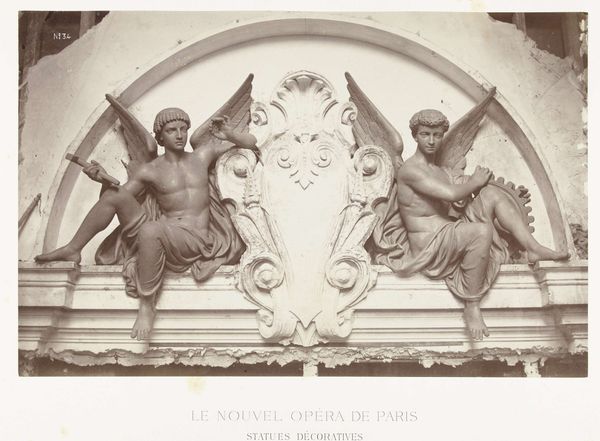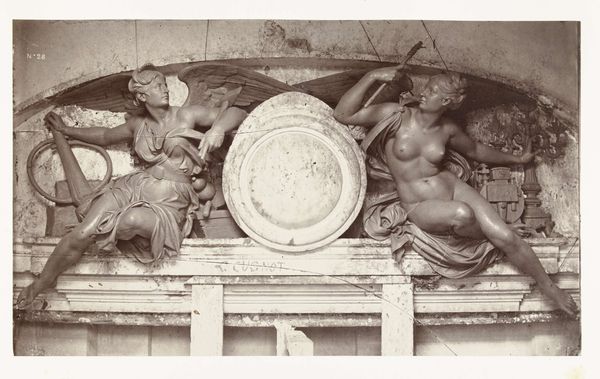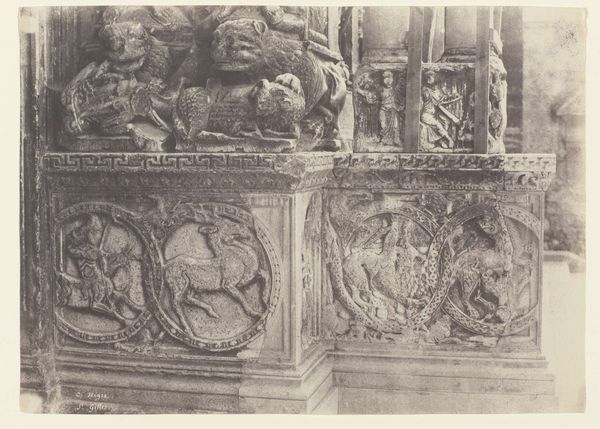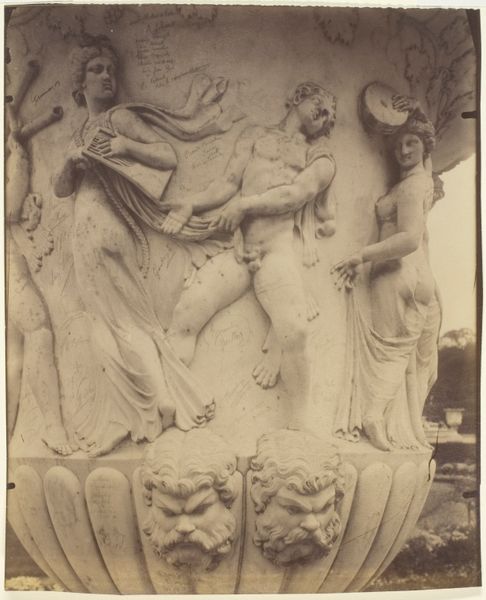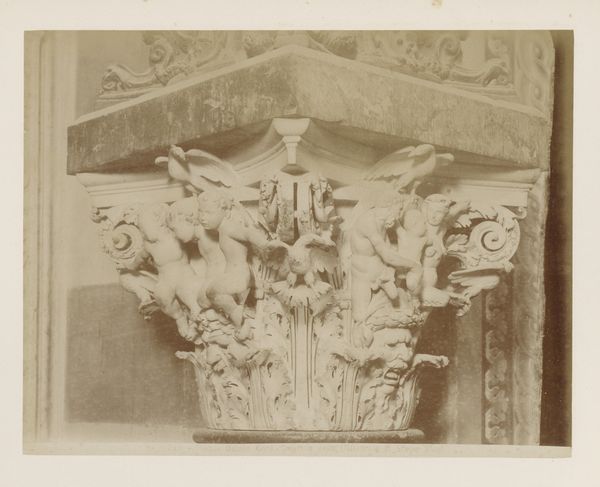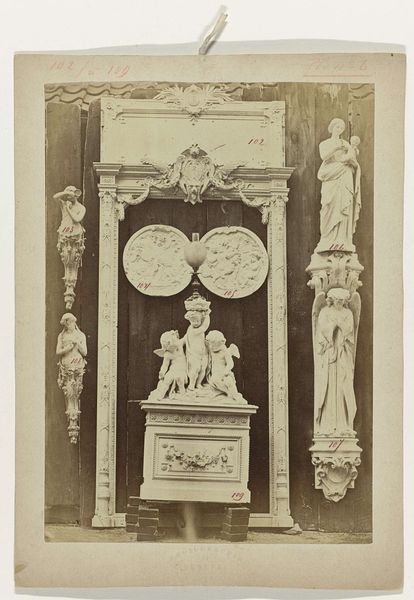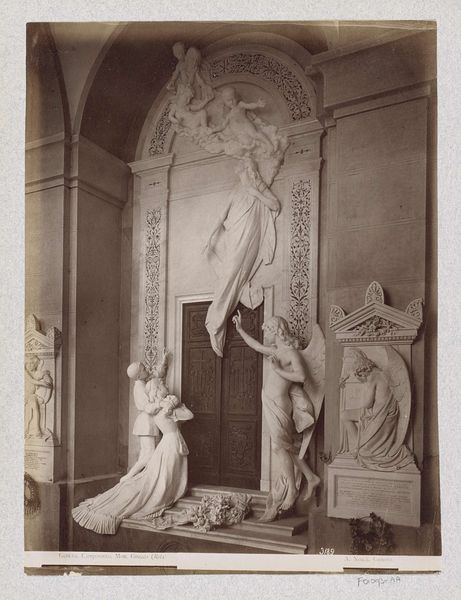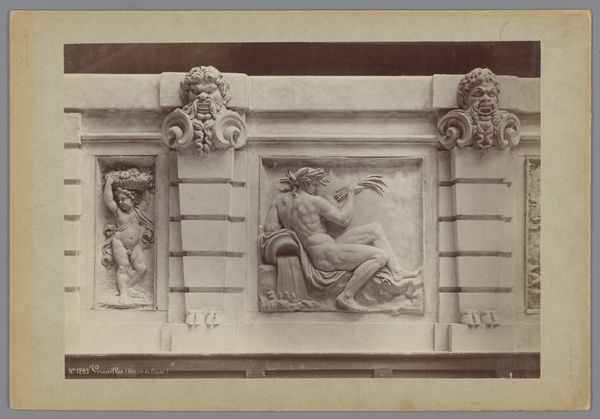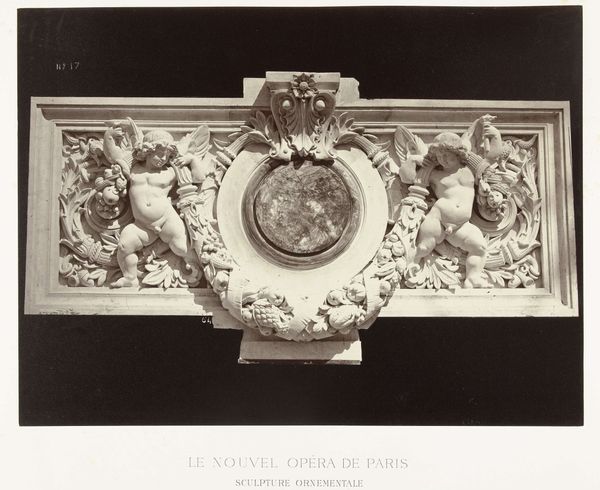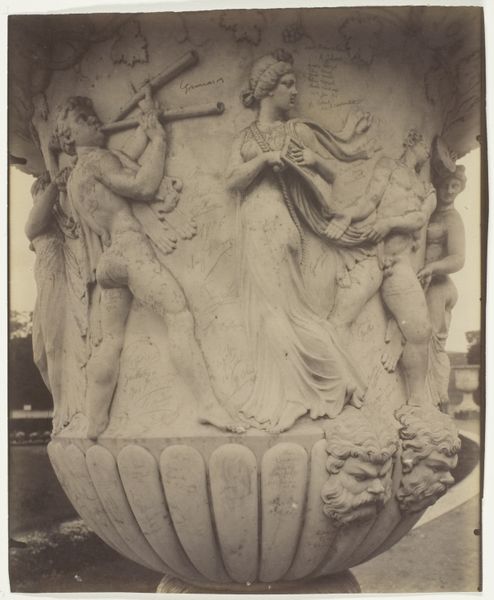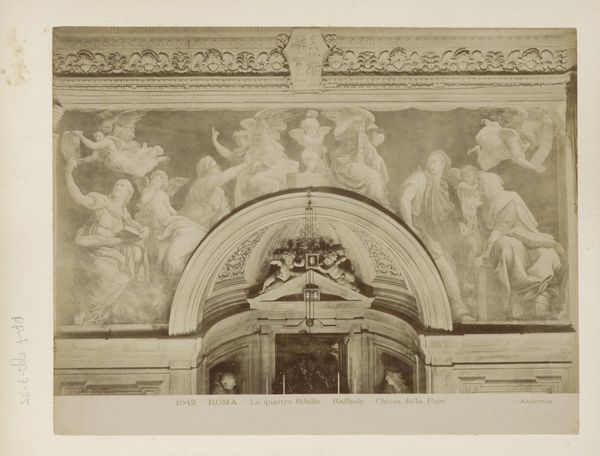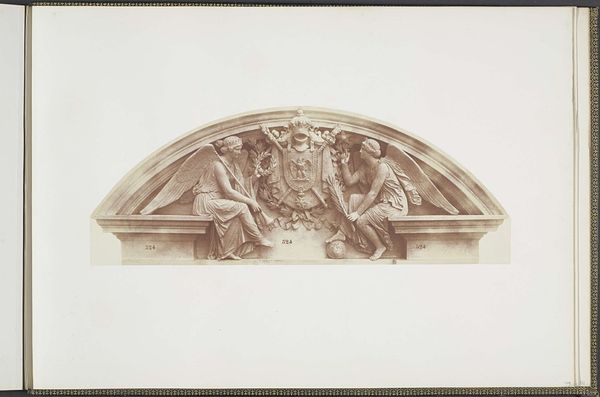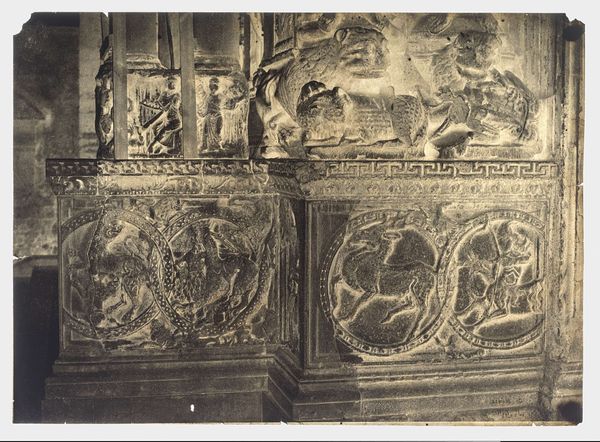
Twee beelden van mannelijke engelen met een hamer in de hand, zittend aan weerszijden van een medaillon, gesitueerd boven een deurpartij. c. 1878 - 1881
0:00
0:00
Dimensions: height 250 mm, width 373 mm, height 620 mm, width 438 mm
Copyright: Rijks Museum: Open Domain
Curator: Looking at this striking image by Louis-Émile Durandelle, dating from around 1878 to 1881, we see two male angelic figures, hammer in hand, flanking a medallion above what seems to be a doorway. It's a study in neoclassical allegory. What's your initial take? Editor: They project power but in repose. The monochromatic tonality amplifies the stoicism, giving these winged figures a serene, almost meditative air, even with the implements of labor. It’s as if they’re not just builders but thinkers. Curator: Absolutely. The location, which this photo captured for posterity, gives that a greater depth. Situated in the opulent surroundings of a building—it brings to mind the grand opera houses being built during that period. Note also the prominent role of the public artwork, serving to inspire pride. Editor: The hammers are crucial to that symbolic language. It's not just about building a physical structure, is it? The tools evoke transformation, perhaps reflecting the era’s societal aspirations of creating something grand and enduring. Curator: Exactly. The choice of marble lends the image a timelessness, almost linking it back to ancient ideals. It solidifies the building's, and by extension the nation’s, place in history. These weren't just decorative sculptures; they were pronouncements of power and cultural ambition. Editor: The symmetry, too. It echoes themes of balance and reason that align directly with Neoclassical tenets and its psychological underpinnings. It aims for an order, perhaps an imposition of order, mirroring human will over the rawness of nature. Curator: That's the brilliance of Durandelle's photograph; he captures not only the artwork itself but also its role within a larger cultural narrative of progress, industry, and artistic achievement. The opera house isn’t just a building; it's a stage for national identity. Editor: Examining these seated figures, the weight they carry, not only the burden of building but representing such aspirations--It reframes how we perceive even simple architectural ornamentation, layering cultural importance to every volute and carefully sculpted wing. It leaves one thinking about how cultural weight is made.
Comments
No comments
Be the first to comment and join the conversation on the ultimate creative platform.
